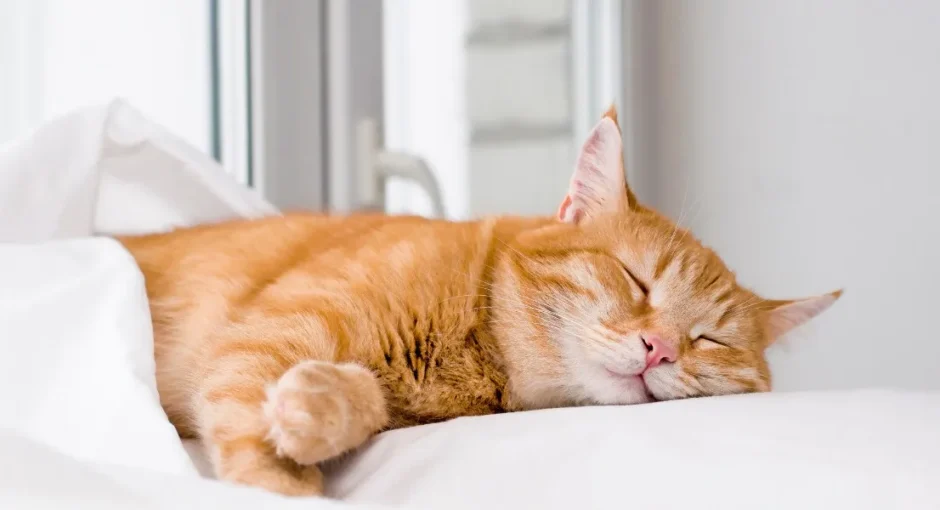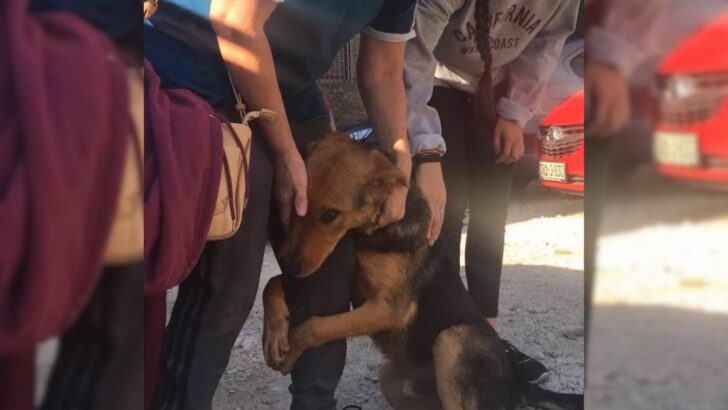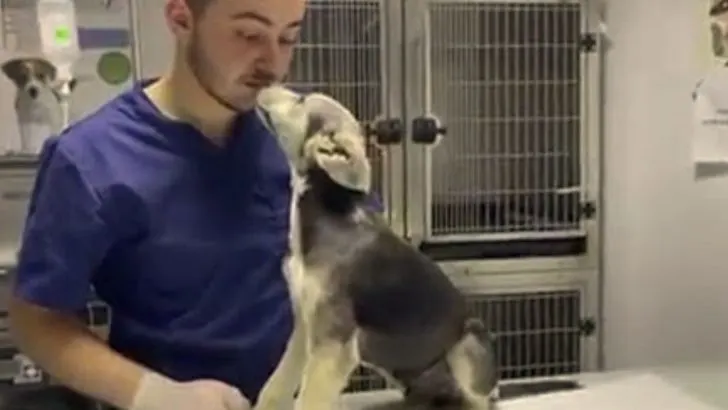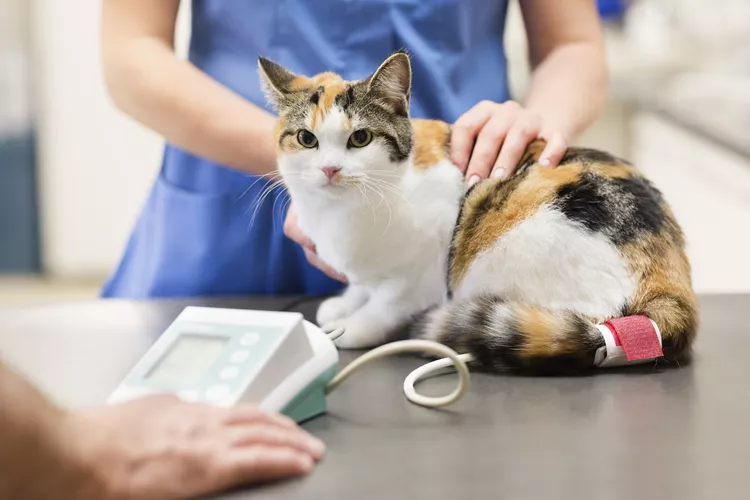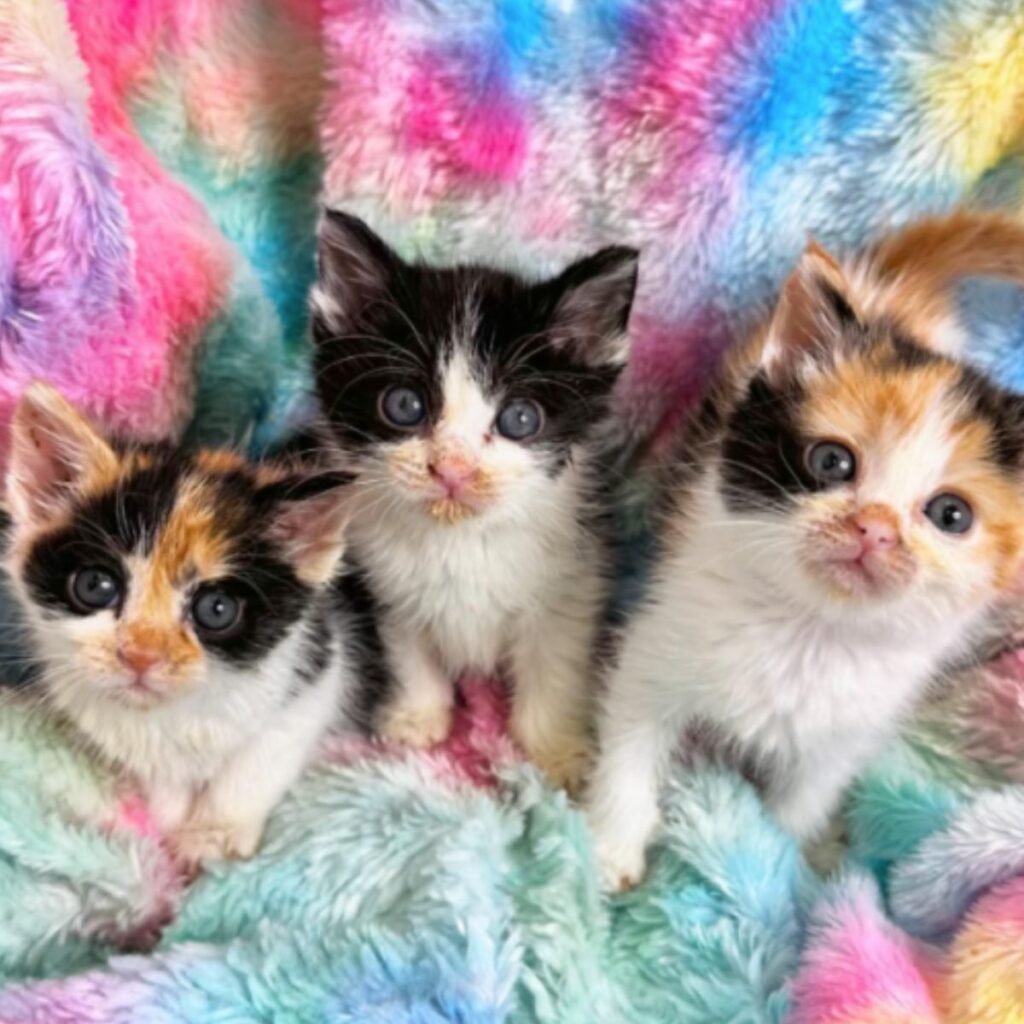By sleeping up to 16 hours every day, cats certainly act like professional snoozers. They seem to operate in a state of being half awake and half asleep, and they’re capable of drifting off even in upright, and uncomfortable, positions. Cats sleep to conserve their energy for things like late-night zoomies and playful pouncing, but sometimes, our feline friends are active even with their eyes shut.
Have you ever seen your cat twitch in their sleep? Do their eyelids flutter while their paws swat and their tail trembles?
These unconscious movements trigger the question, “Do cats dream?” While we’ll never know for sure without asking them outright, animal scientists and veterinarians think they know the answer.
Read more:
Sleep Studies
Based on what we know about mammals and sleep, most experts agree that like humans, cats dream during REM sleep. All mammals have sleep cycles that take the brain through different levels of consciousness.
During REM (rapid eye movement) sleep, breathing is fast, the heart rate is slightly elevated, and the eyes make quick, fluttering movements behind their closed lids. Despite all that brain activity, the REM phase is the deepest stage of sleep. It’s also when most dreaming happens.
Most of our sleep knowledge comes from human studies, but experiments with rats give us insight into the similarities between human and animal sleep cycles. One of the most well-known studies looked at the brainwaves of rats both while they were awake and when they were in REM sleep.
The results showed that it didn’t matter whether the rats were awake and going through a maze or asleep; their brainwaves showed similar electrical activity. This suggests that the rats dreamed during REM sleep, and their minds were just as active in sleep as they were when they were awake. With this information, scientists speculate that animals (including cats) sleep and dream a lot like humans.
There are two clear differences, however, between human and feline sleep. First is how long REM sleep lasts, and the second is how frequently REM cycles happen. Research tells us that cats have shorter REM cycles than humans, but they happen more often.
While a sleeping human usually enters REM sleep every 90 minutes, cats hit that deep sleep about every 25 minutes. This means that cats dream even when they’re taking a quick catnap.
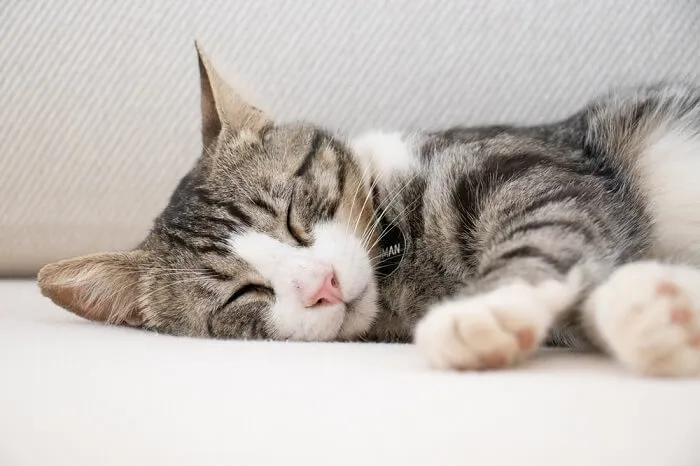
It’s impossible to know for sure what cats dream about, but all evidence suggests that like humans, pets dream about things that happen when they’re awake.
Read more:
- British Shorthair Cats: Breed Traits & Care Tips
- 7 Interesting Facts About Munchkin Cats You’ll Love
What Do Cats Dream About?
You might not remember the details of every dream, but most people dream about events and people from their waking lives. Dr. Katy Nelson, the senior veterinarian at Chewy, told Reader’s Digest, “During non-REM sleep, the brain takes images seen throughout the day and rearranges them into dreams to better process and understand what was seen.
“ Dr. Nelson goes on to explain that mammals then “watch” those dreams during REM sleep. Sometimes those everyday activities are replayed with some kind of fantastical filter (like that time you dreamed your boss was an alien and you worked in an igloo underwater), but studies suggest those dream distortions don’t affect brain activity.
It’s impossible to know for sure what cats dream about, but all evidence suggests that like humans, pets dream about things that happen when they’re awake. Dr. Deirdre Barret told People, “Humans dream about the same things they’re interested in by day, though more visually and less logically. There’s no reason to think animals are any different.”
This means that while you’re dreaming about how your cat took their claws to your brand new furniture, your cat’s dreams might be about the exact same thing, albeit, from a much different perspective.
If you think about your cat’s interests and favorite toys, you can make a good guess as to what they regularly dream about.
When your cat twitches their tail excitedly in their sleep, they could be dreaming about the squirrels they watch daily from the window. There’s even a good chance that your face makes regular appearances in your cat’s dream. Humans dream about people they care about (and stress about), and cats likely do the same.
It’s also believed that kittens get more REM sleep than adult and senior cats. They need that extra time in deep sleep to help them process all the new things they learned that day. Your new kitten could be dreaming about something mundane, like their litter box, but those fast and frequent dreams will likely subside with age.
Do Cats Have Nightmares?
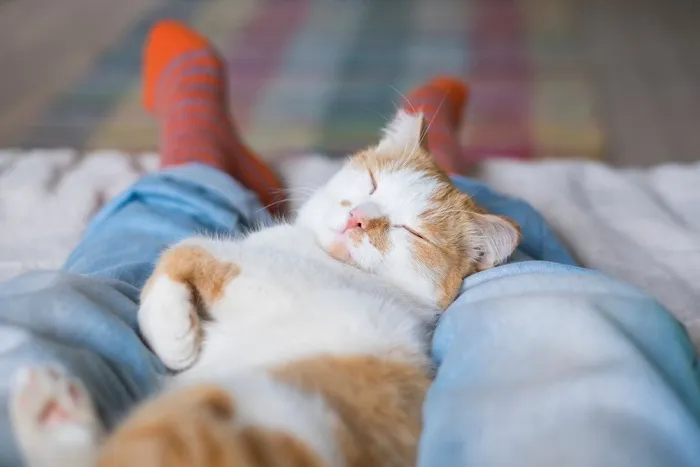
If you frequently catch your cat in REM sleep or even just dozing while sitting upright, clap yourself on the back.
Your cat has a cushy life full of sunny spots on the floor and hand-delivered meals, but they still probably have nightmares. Bad dreams are usually triggered by strong emotions including stress, anxiety, and fear.
For humans, they happen when we’re dealing with something particularly tough in our waking lives. It could be a major change, a problem that needs to be solved, or a recent experience that left you feeling stressed, scared, sad, worried, or angry.
Even though your cat seems to be living the good life, they still feel negative emotions on occasion. It’s possible they’re stressed about a change in their routine. Or maybe they’re afraid of the vacuum, and your most recent cleaning spree has set them on edge. Because experts believe cats dream just like humans, that unfortunately means they also have bad dreams.
You might notice your cat having a bad dream when they start twitching uncomfortably in their sleep. You have no way of knowing what’s going on in their mind, and it’s usually best to let them keep sleeping. Waking a cat in the middle of a nightmare could be dangerous. They might react with aggression before realizing they’re awake.
If you frequently catch your cat in REM sleep or even just dozing while sitting upright, clap yourself on the back. The fact that your cat is comfortable enough to sleep while you’re around means they trust you and feel safe. And who knows, they could even be dreaming about how much they love you.
